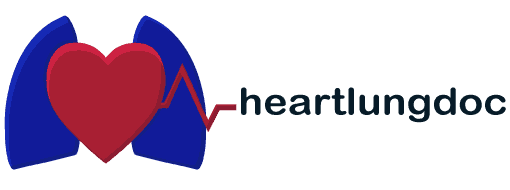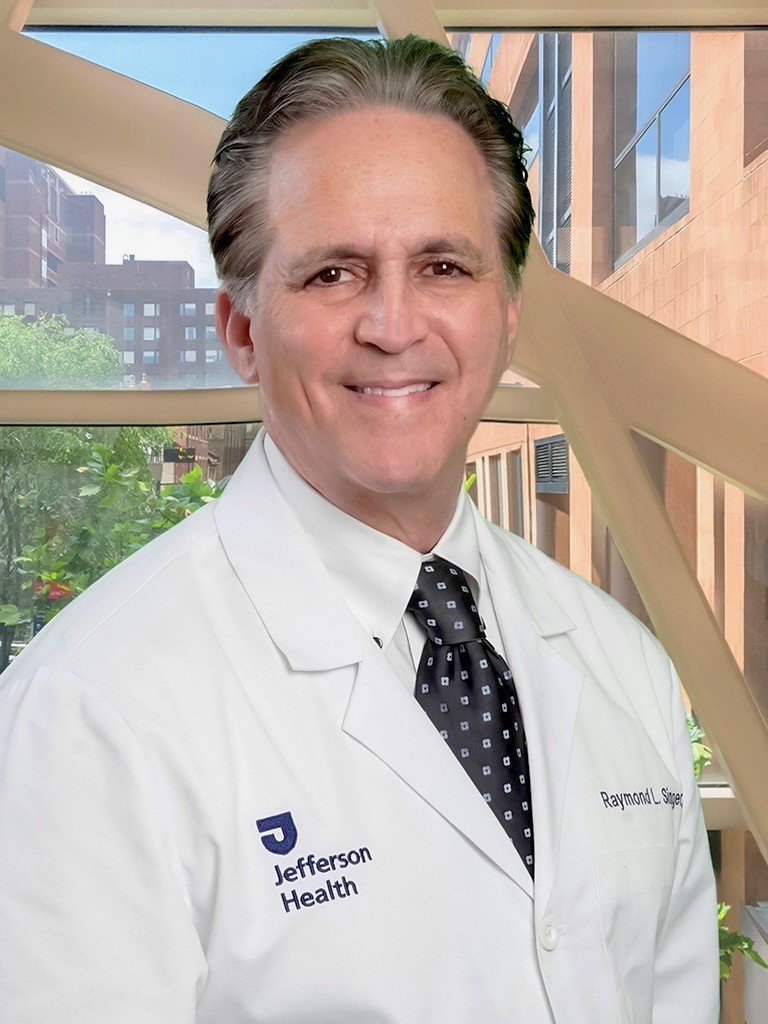Introduction to Coronary Artery Bypass Surgery
Before talking about Coronary Artery Bypass Surgery, we need to talk about the blood supply to the heart:
The heart is busy pumping blood out to the rest of the body and it does so through a very large artery leading out of the heart known as the aorta (see diagram below). Keep in mind, even though the heart is pumping blood out to all the other organs, the heart needs its own blood supply in order to survive. The blood supply to the heart comes from the coronary arteries, which are actually the first two branches of the aorta.
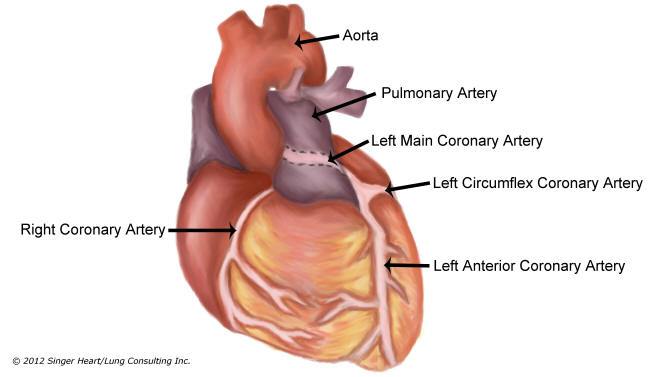
Coronary Artery
What is hardening of the arteries?
The fancy word for hardening of the arteries is atherosclerosis. Basically, the inner lining of the coronary arteries becomes damaged and as a result plaque (fatty substances and calcium) begins to build up. As the plaque builds up, the arteries become narrowed as shown in the picture below.
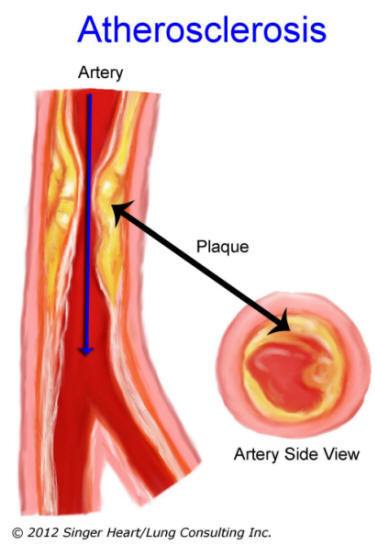
Atherosclerosis
What causes hardening of the arteries?
Genetics
There are many common risk factors that leads to hardening of the arteries.Unfortunately, the most common is genetics. If your parents had coronary artery disease, especially at a young age, then your risk for coronary artery disease is also high. Keep in mind, if your parents did not have coronary artery disease that does not mean you’re free and clear. Our genetics go back thousands of years and so the bad genes can be hidden for generations.
High Cholesterol
After genetics, there is a whole list of other risk factors. Of course, some might debate that all of the following are effected by genetics as well. For example, everyone agrees that high cholesterol is a risk factor for heart disease. Certainly, our diets have an impact on our cholesterol levels, but also our genetics determine our baseline cholesterol levels. That’s not to say that you should continue to eat fried foods because your family has a history of high cholesterol. On the contrary, it’s even more important for you to stop eating high fat foods since your risk for getting heart disease is even greater.
High blood pressure (arterial hypertension)
High blood pressure (arterial hypertension)is one of the most common risk factors for developing hardening of the arteries. In addition, high blood pressure causes muscle damage to the heart, leads to aneurysm formation, kidney failure, and even stroke. The problem with high blood pressure is that most patients don’t realize that they have it. It’s truly a silent killer! That’s why you need to have a yearly physical exam. Interestingly, high blood pressure can often be tricky to treat as patients may exhibit “normal” blood pressure in their doctor’s office, but have an abnormal response in blood pressure during exercise or stress.
Diabetes
Diabetes causes hardening of the arteries. Indeed, diabetes causes very severe changes in all of the body’s blood vessels, nerves, and tissues. When the diabetes is severe, the blood vessels can become so narrowed and diseased along their lengths that we can’t even perform a bypass to the vessels because there is no adequate place to do our sewing.
Obesity
Obesity can lead to diabetes and, of course, can contribute to high cholesterol and high blood pressure. As you can imagine, it’s very common for us to see patients with multiple risk factors. Additionally, patients with both diabetes and obesity are at significant risk for developing wound infections and difficulty healing.
Smoking
Smoking causes hardening of the arteries. Yes it does! Cigarette smoke is toxic for many reasons. First, it causes spasm of the the blood vessels. On top of that, the chemicals in the smoke include chemicals that break down tissues and destroys the cells throughout the body. That’s why smokers are at risk for a lovely combination of heart disease and cancer. By the way, not just lung cancer, but many others such as kidney cancer, blood cancer, and blood cancers. Heavy smokers also do poorly with surgery, often having pulmonary (lung) complications such as pneumonia, blood clots, and a significantly increased chance of wound problems.
Complete Arterial Revascularization
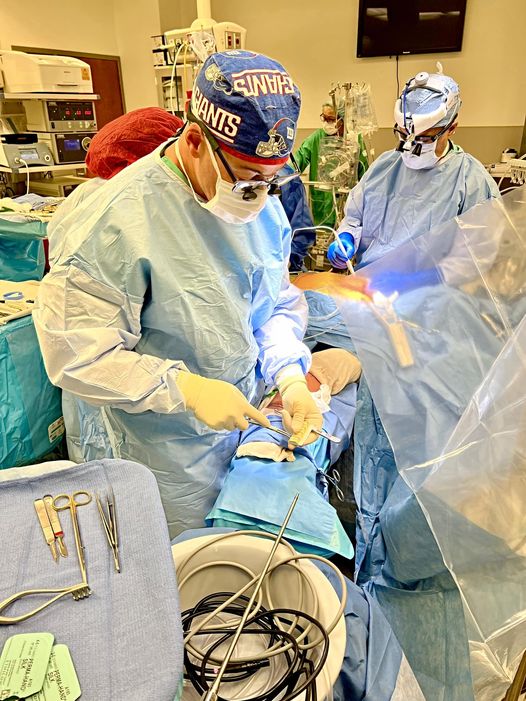
Coronary Artery Disease
Below you can see my video where I discuss Coronary Artery Disease:
Testimonial: Acclaimed Opera Singer Sings From The Heart!
PAD
Lower extremity peripheral artery disease (PAD) effects >230 million adults worldwide and is associated with increased risk of various adverse clinical outcomes, including coronary artery disease, myocardial infarction, congestive heart failure, stroke, and amputation.
Below, you can listen to the video testimonial of a 69-year old patient who presented with leg claudication, which is a type of leg muscle pain that occurs due to lack of oxygen, and that’s triggered by activity and relieved by rest. Claudication is most often a symptom of peripheral artery disease.
The patient’s vascular surgeon obtained a cardiology screening evaluation which led to a positive stress test and cardiac catheterization that showed life-threatening left main and three- vessel coronary artery disease —with no history of angina, diabetes, or MI! His only risk factors were PAD and smoking.
The patient underwent triple vessel coronary artery bypass surgery with bilateral internal mammary artery grafts. He is going home on postoperative day #4 and will follow-up with his vascular surgeon for the leg bypass surgery within the next 6 weeks.
Hibernating Myocardium
With permission from the patient to post, this video shows the left ventricle of the heart before and after successful coronary artery bypass surgery —in a 65-year-old man who presented with worsening chest pain and shortness of breath. An intraoperative TEE (trans-esophageal echocardiogram) was performed at the outset of the operation and repeated at the completion of his double arterial bypass graft surgery.
So, let’s talk about Conventional Coronary Artery Bypass Surgery…
